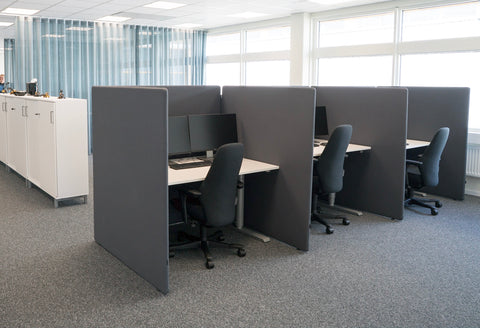Dear fellow workplace professionals,
It is about time we start giving the desk the credit it deserves in Activity Based Working!
The desk is the focal point in the physical part of ABW, around which we create all other spaces. In my experience, we need 60-70 desks per 100 employees depending on activity pattern. No other piece of furniture, except conference chairs in some cases, comes close to those numbers. Still, most ABW communication shows a lounge, coffee shop or a fancy meeting room. Sure, these spaces are crucial and make very nice pictures, but together we need to turn the spotlight around.
The current focus acts as nutrition for misconceptions about ABW - shall we all start working in sofas now? No, the answer is all day long, part of the day or never if you don’t like it. You decide! For us working daily on the topic, this is clear. But for the company’s core business facing a major change journey, it is not clear what to expect from the future workplace. It is our job to show and tell the correct story!The role of the desk as we used to know it; in cell-office and large open plan solutions with name tags on them is an outdated concept for most organizations. It simply doesn’t match with today’s need to combine increased collaboration, increased focus, work-life balance, attractive and space efficient workplaces in a global context. Our pre-studies typically show that the actual utilization of desks in traditional solutions is 30-50%, with a peak at 50-70%, and that most staff lack spaces for collaboration and focus. To better match the modern way of working, ABW is introduced at an ever-increasing number of workplaces.

In ABW, our colleagues may choose whatever seat they like based on activity, and perhaps most crucially, their personal preference. What we tend to forget is that this also applies for desks. The desks in ABW come as single, duo, four-by-four, six-by-six, in focus rooms, in silent spaces, in active collaborative spaces, in agile spaces, in spaces with more daylight than others, in spaces with different interiors, in spaces with different temperature, in different sizes (160 times 80 cm being my personal preference) and with different screening around. Also, they are occupied by different colleagues and there is a consensus whether you can be approached or not. By actively choosing to sit in the active spaces or in the silent library, everyone clearly states their expectations on their colleagues. This unleashes the full potential of all desks, no desk has a bad placement anymore and everyone has control of their daily brain power for deep focus.

Most colleagues quickly find their favorite seat in ABW, and for most it is still a desk. Many will pick the exact same desk day two and stick to it. At least for some time. This is perfectly okay. Change does not really happen before we move in, change starts when we move in. Over time, colleagues will start to see the benefits of variation and use most spaces, but only if we provide enough desks placed in the right way from day one. By securing the basic human need for routines and comfort we set the foundation for change. Not the other way around.

You get the message; the desks are still great and they are critical to succeed in the ABW journey! So, please join me in spreading the word; the desk has returned in ABW (it was actually never gone), and we need to tell the world about it!
Full article by Jonas Westerlund can be found here

